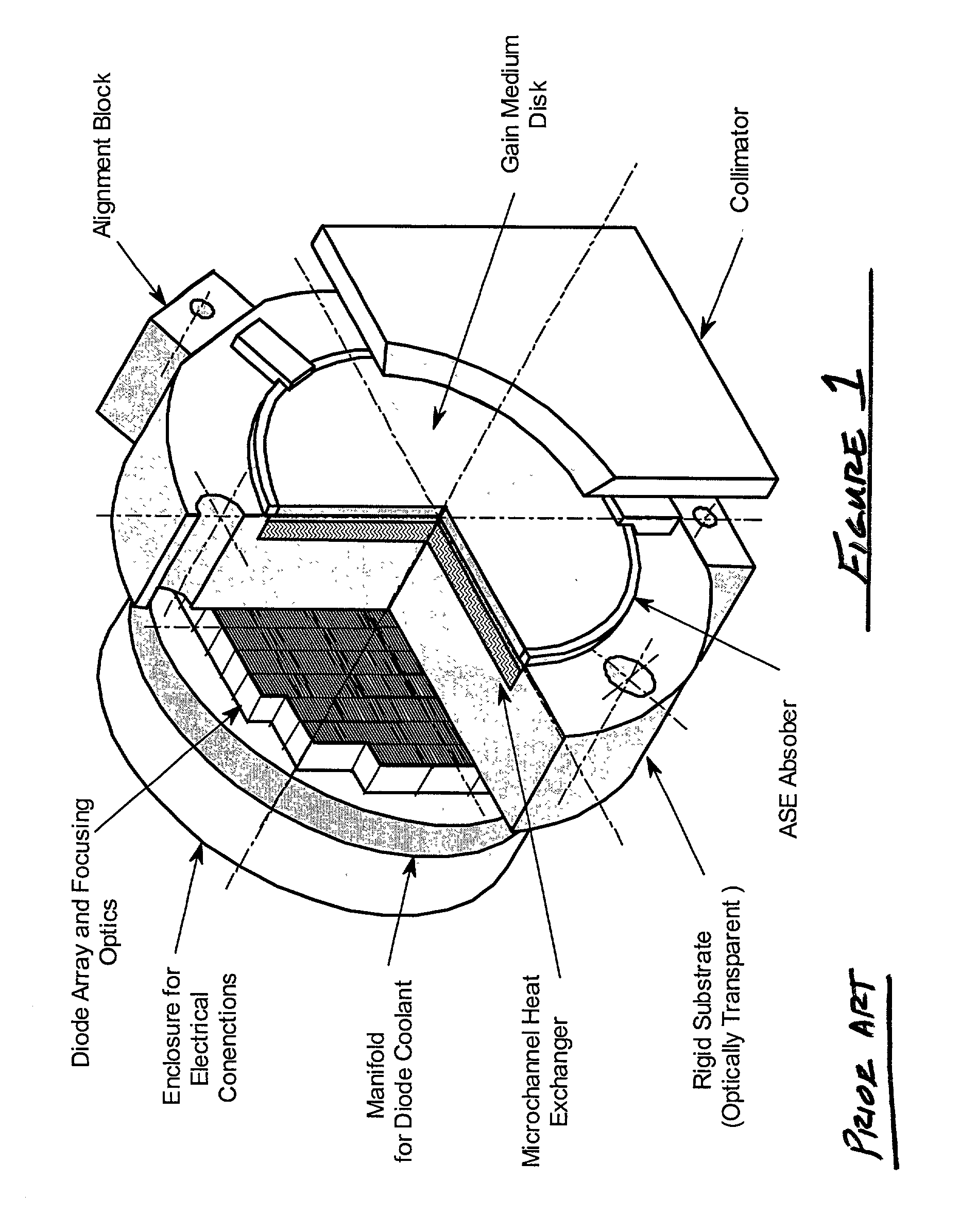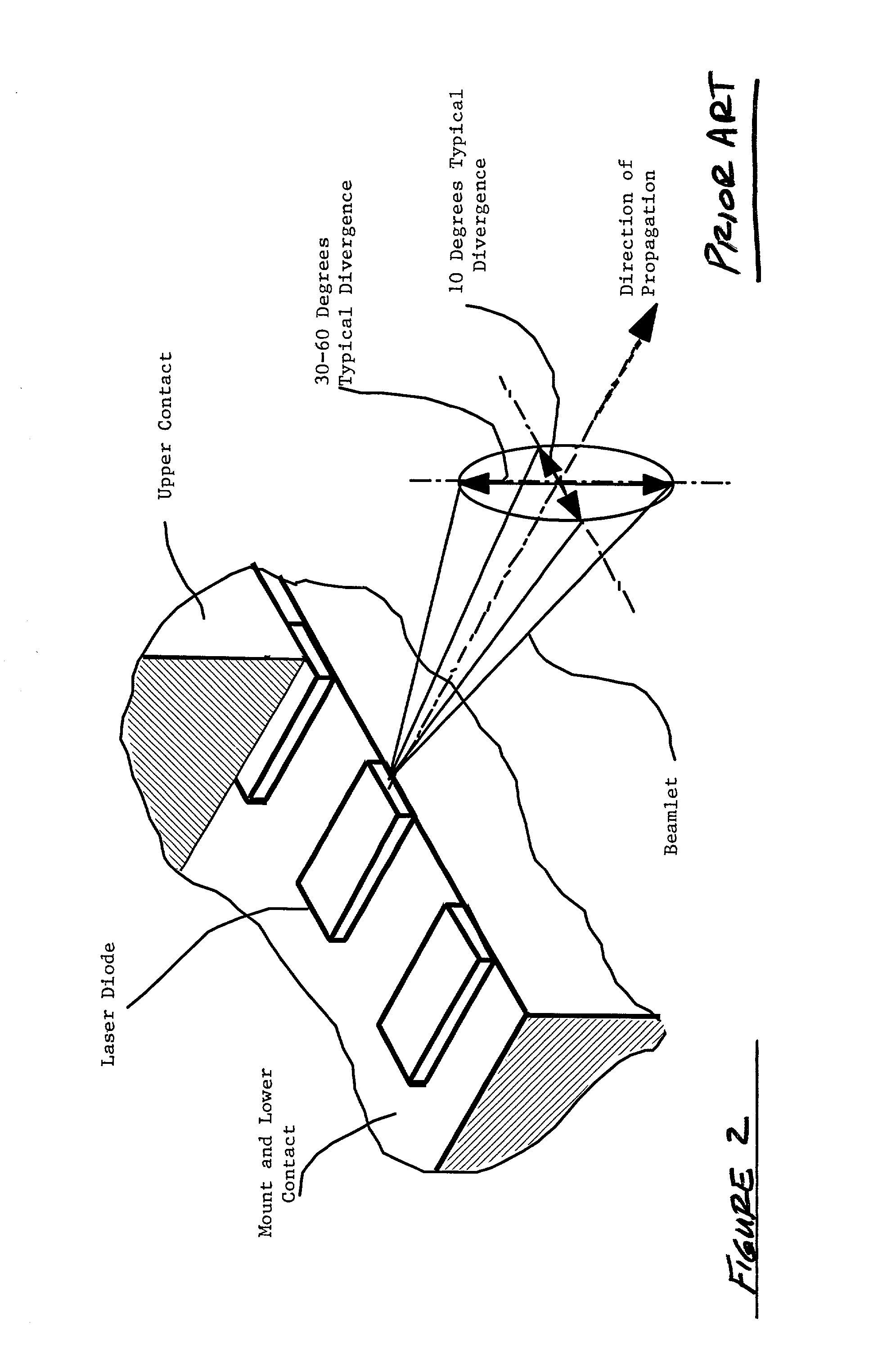Side-pumped active mirror solid-state laser for high-average power
- Summary
- Abstract
- Description
- Claims
- Application Information
AI Technical Summary
Problems solved by technology
Method used
Image
Examples
Embodiment Construction
[0064] As used herein, "Laser gain medium" refers to an optical material having a host lattice doped with suitable ions, which in the present invention are pumped to a laser transition. Although the present invention is not limited to a specific lasing material or to a specific optical pump source, the preferred host lattice materials are yttrium aluminum garnet (YAG), gadolinium gallium garnet (GGG), gadolinium scandium gallium garnet (GSGG), lithium yttrium fluoride (YLF), yttrium vanadate, phosphate laser glass, silicate laser glass, and sapphire. Suitable dopants for this lasing medium include Ti, Cu, Co, Ni, Cr, Ce, Pr, Nd, Sm, Eu, Gd, Tb, Dy, Ho, Er, Tm, and Yb. The optical pump source is selected based on the absorption characteristics of the selected laser gain medium. Preferably, semiconductor diode lasers are used for the optical pump source. InGaAs diodes are preferred for pumping of Yb.sup.3+ ions. "Undoped optical medium" refers to an optical material which is preferabl...
PUM
 Login to View More
Login to View More Abstract
Description
Claims
Application Information
 Login to View More
Login to View More - R&D
- Intellectual Property
- Life Sciences
- Materials
- Tech Scout
- Unparalleled Data Quality
- Higher Quality Content
- 60% Fewer Hallucinations
Browse by: Latest US Patents, China's latest patents, Technical Efficacy Thesaurus, Application Domain, Technology Topic, Popular Technical Reports.
© 2025 PatSnap. All rights reserved.Legal|Privacy policy|Modern Slavery Act Transparency Statement|Sitemap|About US| Contact US: help@patsnap.com



